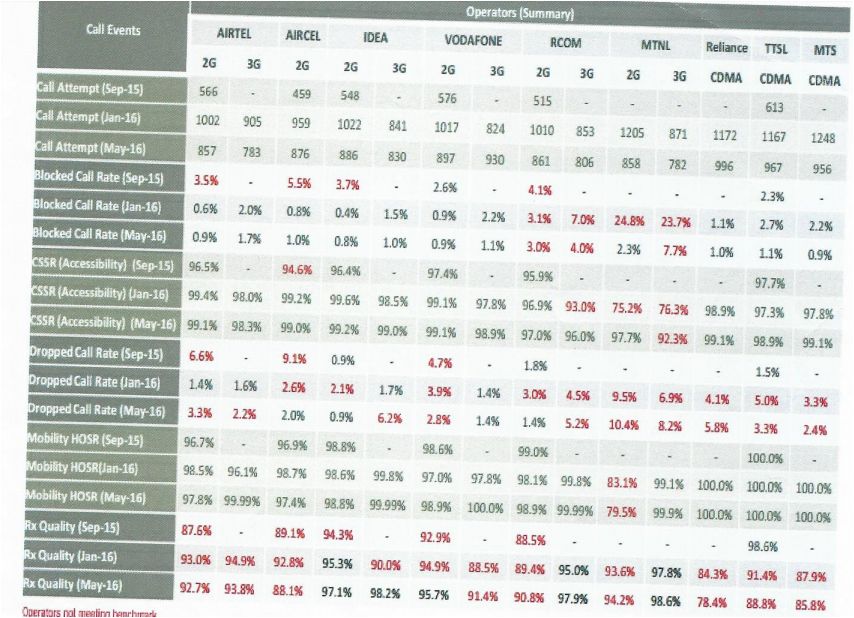
Most telecom network operators have failed to meet the call drop rate threshold of less than two percent in Delhi NCR region (NCR) during a recent test drive, said TRAI.
The Telecom Regulatory Authority of India (TRAI) data revealed that telecom service providers such as Reliance Communications and Vodafone India met the call drop rate threshold. Vodafone India recently announced Capex enhancement plans for India.
“In the last 8-9 months we have increased frequency and coverage of test drives. Today we are launching Delhi’s results,” said TRAI Chairman RS Sharma at a press meet.
TRAI conducted the test drive in Delhi between May 3-6. The test route covered a distance of around 600 km. The independent test drive was carried out by Phistream.
There are a few parameters on which the report was based. “Improvement for most on call setup success rate and quality but degradation on call drop rate (CDR) compared to previous independent drive tests of January 2016. Most operators fall below the 2 percent CDR threshold,” the report stated.
 The drive test was done on a total of 12,300 calls, made for six 2G networks, five 3G networks and three CDMA networks covering eight operators during those four days.
The drive test was done on a total of 12,300 calls, made for six 2G networks, five 3G networks and three CDMA networks covering eight operators during those four days.
The call drop issue has been keeping the government and the telecom regulator busy for quite some time now.
Communications Minister Ravi Shankar Prasad recently said the Department of Telecommunications and the TRAI are looking into the call drop issue seriously. Around one lakh new sites (telecom towers) have been added in the country, of them 6,000 in Delhi itself.
The Supreme Court recently scrapped TRAI’s order to the telecom operators on compensating subscribers for call drops. But the government assured mobile phone users that it will keep a check on service quality.
The TRAI officials on Wednesday said they are planning to write to the government seeking amendments in the TRAI Act to address deficiencies. IANS





